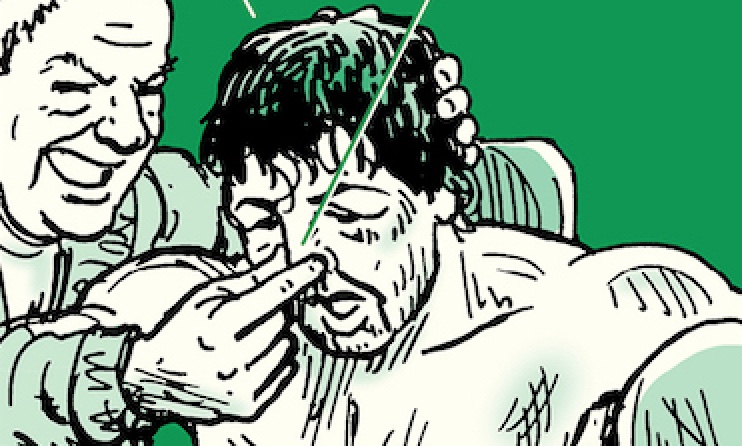This post originally appeared in the Art Of Manliness ‘Trunk’ – a collection of cool stuff we find while wandering the vast deserts of the world wide web.
Recently came across an interesting article on Psychology Today about the growing problem of porn-induced erectile dysfunction. While ED is often associated with middle-aged and older men, a “growing number of young, healthy Internet pornography users are complaining of delayed ejaculation, inability to be turned on by real partners, and sluggish erections.”
The problem is physiological not psychological. As with any stimulation you give your brain, at first it gives you a lot of pleasure, but eventually the brain gets used to it, even numb to it. It’s like if you love chocolate ice cream; if you started eating it for breakfast, lunch, and dinner, after a couple of weeks it would stop giving you pleasure, and it might even start disgusting you. Here’s the more scientific explanation:
Recent behavioral addiction research suggests that the loss of libido and performance occur because heavy users are numbing their brain’s normal response to pleasure. Years of overriding the natural limits of libido with intense stimulation desensitize the user’s response to a neurochemical called dopamine.
Dopamine is behind motivation, “wanting” and all addictions. It drives the search for rewards. We get little spurts of it every time we bump into anything potentially rewarding, novel, surprising, or even anxiety-producing.
Animal models have established that both sexual desire and erections arise from dopamine signals. Normally, dopamine-producing nerve cells in the reward circuitry activate the sexual (libido) centers of the hypothalamus, which in turn activate the erection centers in the spinal cord, which send nerve impulses to the genitalia. A steady stream of nerve impulses, which release nitric oxide into the penis and its blood vessels, maintain an erection.
Nitric oxide in turn stimulates the blood vessel dilator cGMP, the on/off switch for engorgement and erection. The more cGMP is available the more durable the erection. So, the pathway from the brain to an erection is:
Reward circuitry (dopamine) > hypothalamus > spinal cord > nerves > penis
Erections start with dopamine and end with cGMP. Sexual enhancement drugs work by inhibiting the breakdown of cGMP, thus allowing it to accumulate in the penis. Yet if the patient’s brain isn’t producing enough signals in the first place, ED drugs will not increase libido or pleasure even if they (sometimes) produce an erection.
In the case of age-related erectile dysfunction, cardiovascular conditions or diabetes, the primary weak link tends to be the nerves, blood vessels, and penis. However, for men with porn-induced erectile dysfunction, the weak link is not the penis, but rather the desensitized dopamine system in the brain.
In the last decade or so, addiction researchers have discovered that too much dopamine stimulation has a paradoxical effect. The brain decreases its ability to respond to dopamine signals (desensitization). This occurs with all addictions, both chemical and natural. In some porn users, the response to dopamine is dropping so low that they can’t achieve an erection without constant hits of dopamine via the Internet.
The solution to those suffering from porn-induced ED is to “reboot” the brain by abstaining from porn and masturbation for several months.







